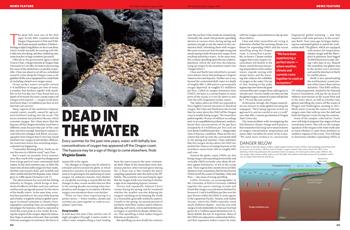
Officials at the government agency asked Francis Chan, a biogeochemist at Oregon State University in Corvallis, for help in discovering the cause of the disturbance as quickly as possible. Chan was about to set off on a scheduled research cruise along the Oregon coast, so he grabbed all the extra equipment he could think of, including a brand-new oxygen sensor.
Ocean surface waters normally contain 5–8 millilitres of oxygen per litre of water, a number that declines rapidly with depth. But on his first day out, Chan found that at a depth of 50 metres the inner coastal waters off Oregon were hypoxic — oxygen levels there were lower than 1.43 millilitres per litre, so low that fish can’t survive1.
Many regions of the world have hypoxic coastal waters, usually caused by agricultural fertilizers leaking into the ocean. The excess nutrients fuel plankton blooms, which consume oxygen. But Chan knew that the hypoxia off the Oregon shoreline must have a different cause, because that part of the coast does not have enough farming to explain it. And when his colleague Jack Barth, an oceanographer from Oregon State University, found similarly low oxygen levels farther offshore, the researchers knew that something unprecedented was happening. Read more